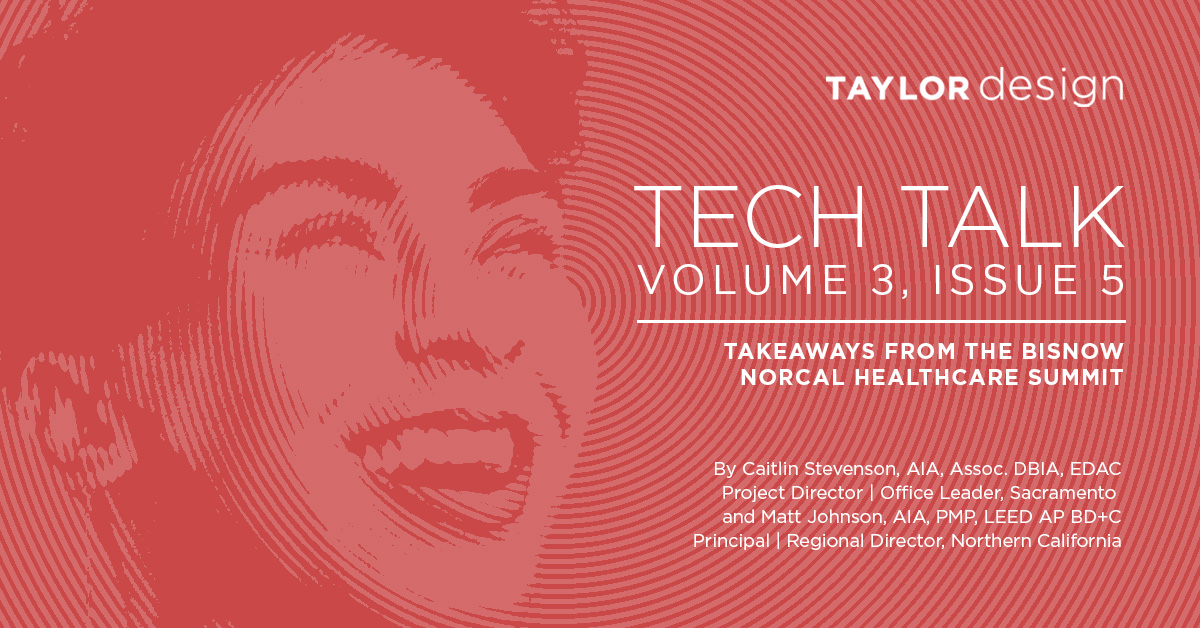Life Sciences CRE Conference West
Takeaways from Conference Panelist Enrique Ceniceros, our Science & Technology Director
On April 25 in San Diego, Taylor Design’s Director of Science & Technology, Enrique Ceniceros, AIA, LEED AP BD+C and WELL AP, participated in Bisnow’s “Life Sciences CRE Conference West: Meeting the Demand for Lab Space, Capturing Growth Opportunities in the Market & Facilitating the Advancement of Medicine & Healthcare.” We were struck by the heightened optimism in the room about the outlook for San Diego’s science and technology market. Here are five other takeaways from this excellent event.
- Repositioning Existing inventory. In the session that Enrique participated in, “Innovating & Repositioning: Adaptive Reuse, Conversions & Expansion Projects,” the discussion turned to the conversion of parts of Horton Plaza from its historic use in retail into a life sciences space. The developer selected this languishing outdoor mall because it is located in the heart of downtown, thereby creating an urban campus, while featuring loading docks, a parking structure, suitable floor-to-ceiling clearance, proximity to the airport and many other attractive features. This illustrates how life sciences developers and designers are becoming even more creative in adapting existing structures to suit their expanding needs.
- Smaller Projects. Many proposed and constructed projects are in the 5,000- to 20,000-square-foot range. This indicates that much of the activity in the metropolitan area involves startups that don’t initially require as much space or funding to get established and begin moving forward. Also, with rising interest rates, speculation about a recession and questions about the stability of the country’s banking system, venture capital companies are more cautious and far more likely to back a smaller project than a large one.
- Flight to Quality. Similarly, the San Diego life sciences community is experiencing a “flight to quality” because investors are more guarded with their money. As a result, designers and developers are ensuring that a project’s strategy is sound and sensible, that it includes the correct amenities, and that the spaces adapt well enough to accommodate shifting needs and technologies.
- Physical & Mental Wellness. Life sciences companies are competing for the best talent, and hiring candidates seek employers that incorporate wellness into the workplace. There is more focus on providing conveniences such as an exercise area or fully functional cafeteria. Owners require office environments that provide the best possible ventilation, interior and exterior lighting, and other features designed to foster good mental and physical health. Even if they’re not demanding full certification, many developers and owners want their facilities to meet standards such as LEED, WELL and Fitwel.
- Alternative Project Delivery Methods. Design-build project delivery is popular in many large life sciences hubs, including the Bay Area, but its use is now growing in San Diego. One possible reason is that pandemic-related supply chain challenges have added a level of uncertainty to the procurement and delivery of lab material. Design and construction schedules overlap more in design-build than in design-bid-build, so more developers and owners are opting for design-build to compress the process and get ahead of any potentially deadline-busting delays.





